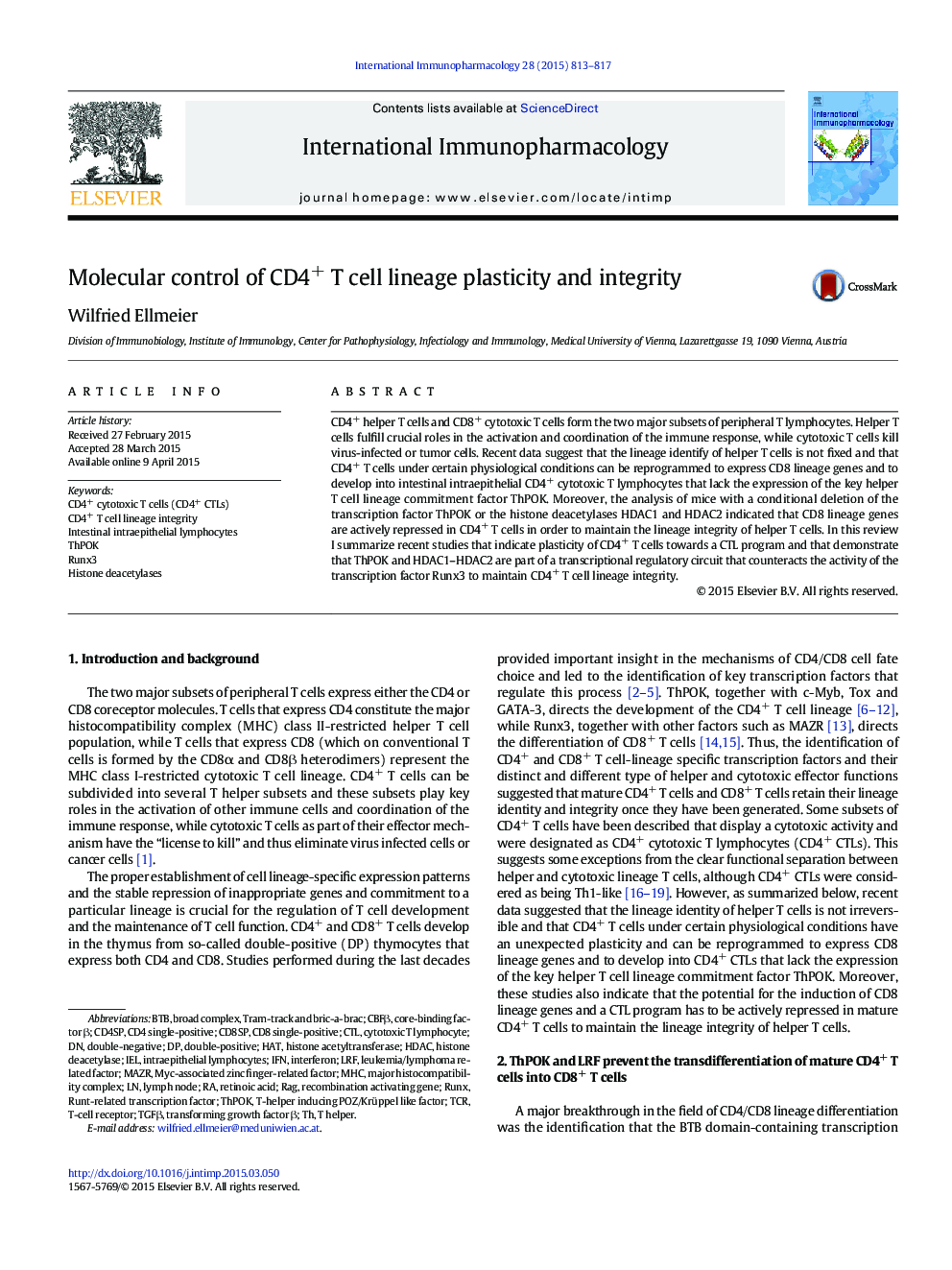| Article ID | Journal | Published Year | Pages | File Type |
|---|---|---|---|---|
| 2540367 | International Immunopharmacology | 2015 | 5 Pages |
•CD4+ helper T cells and CD8+ cytotoxic T cells form the two major T cell lineages.•Some subsets of CD4+ T cells display a cytotoxic activity (CD4+ CTLs).•CD4+ T cells can be reprogrammed into CD4+ CTLs in vivo.•ThPOK, HDAC1–HDAC2 and Runx3 regulate CTL program induction in CD4+ T cells.•CD4+ T cell lineage integrity is maintained by active repression of CTL program.
CD4+ helper T cells and CD8+ cytotoxic T cells form the two major subsets of peripheral T lymphocytes. Helper T cells fulfill crucial roles in the activation and coordination of the immune response, while cytotoxic T cells kill virus-infected or tumor cells. Recent data suggest that the lineage identify of helper T cells is not fixed and that CD4+ T cells under certain physiological conditions can be reprogrammed to express CD8 lineage genes and to develop into intestinal intraepithelial CD4+ cytotoxic T lymphocytes that lack the expression of the key helper T cell lineage commitment factor ThPOK. Moreover, the analysis of mice with a conditional deletion of the transcription factor ThPOK or the histone deacetylases HDAC1 and HDAC2 indicated that CD8 lineage genes are actively repressed in CD4+ T cells in order to maintain the lineage integrity of helper T cells. In this review I summarize recent studies that indicate plasticity of CD4+ T cells towards a CTL program and that demonstrate that ThPOK and HDAC1–HDAC2 are part of a transcriptional regulatory circuit that counteracts the activity of the transcription factor Runx3 to maintain CD4+ T cell lineage integrity.
